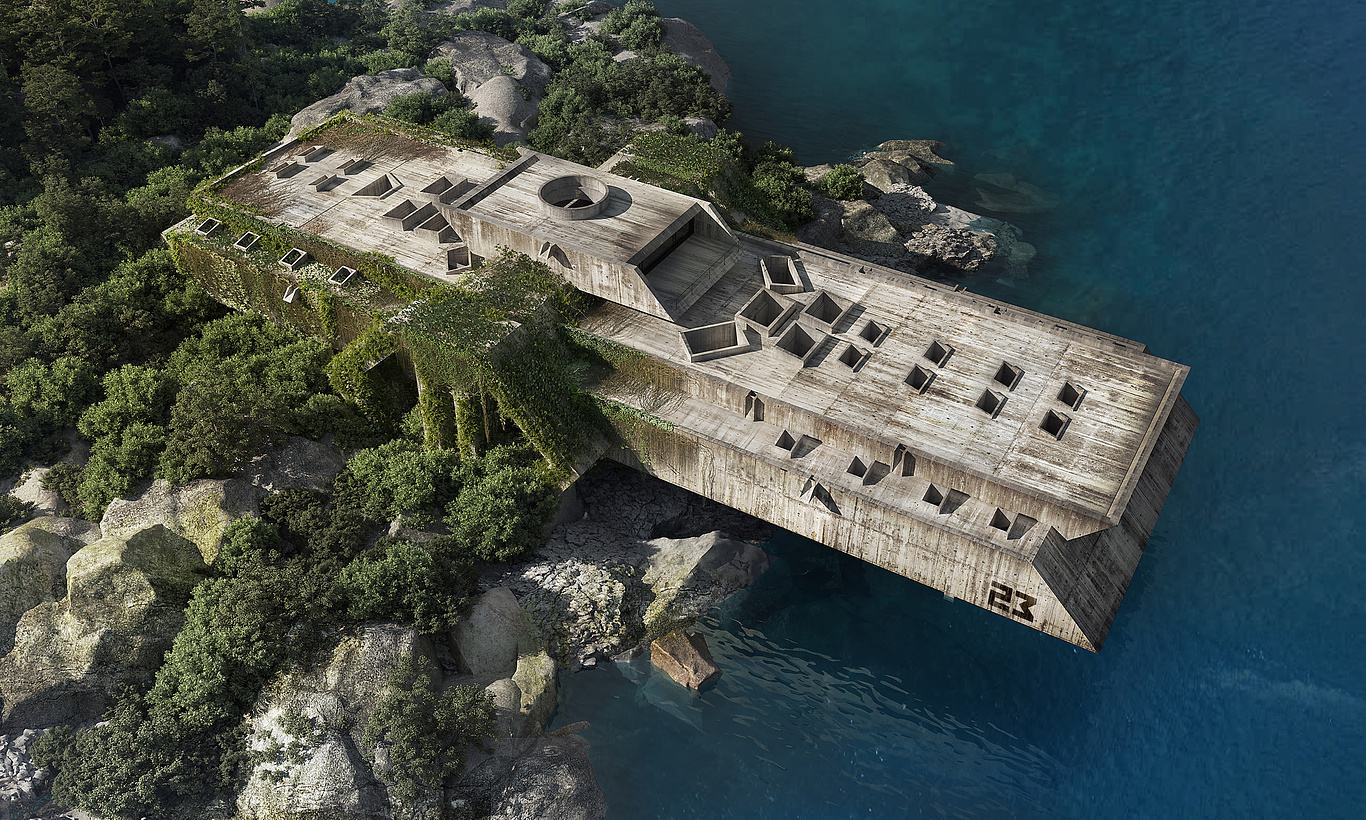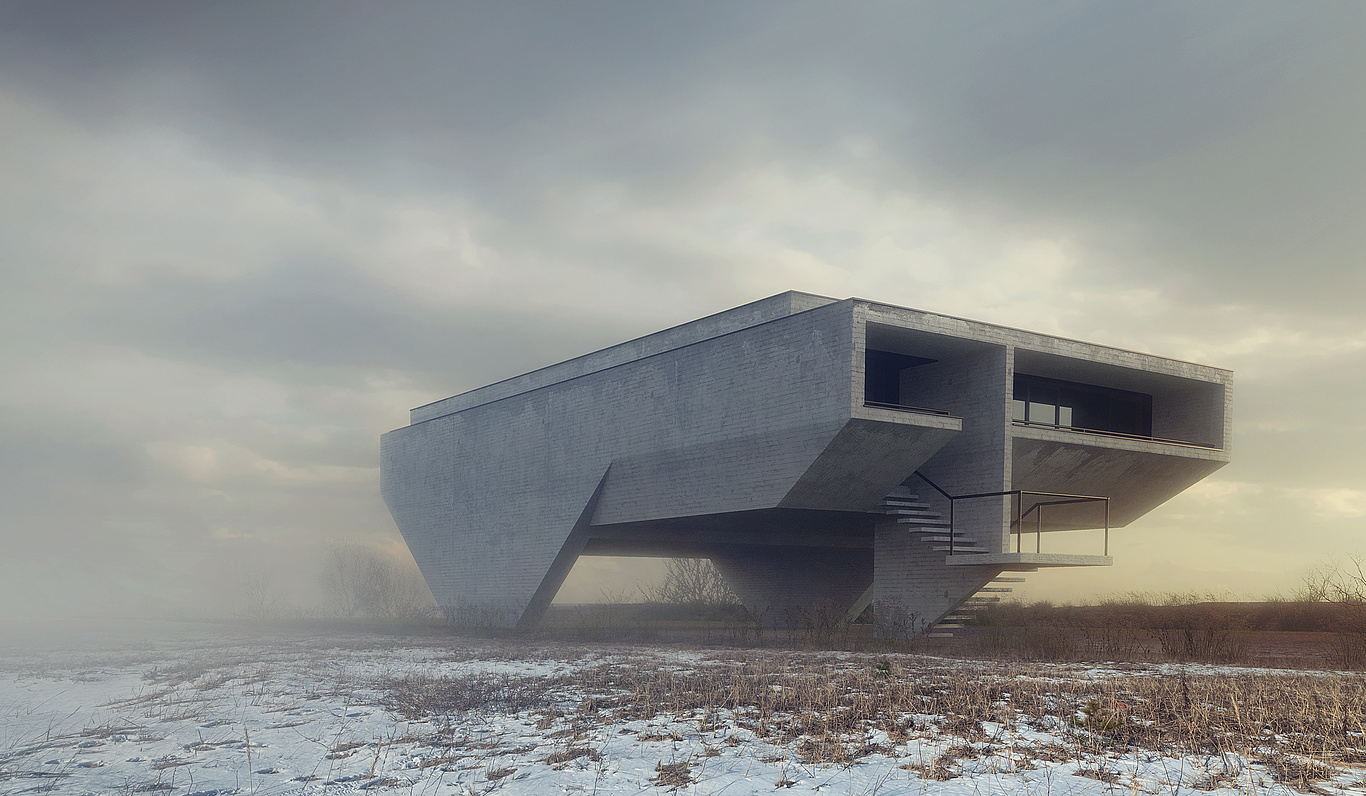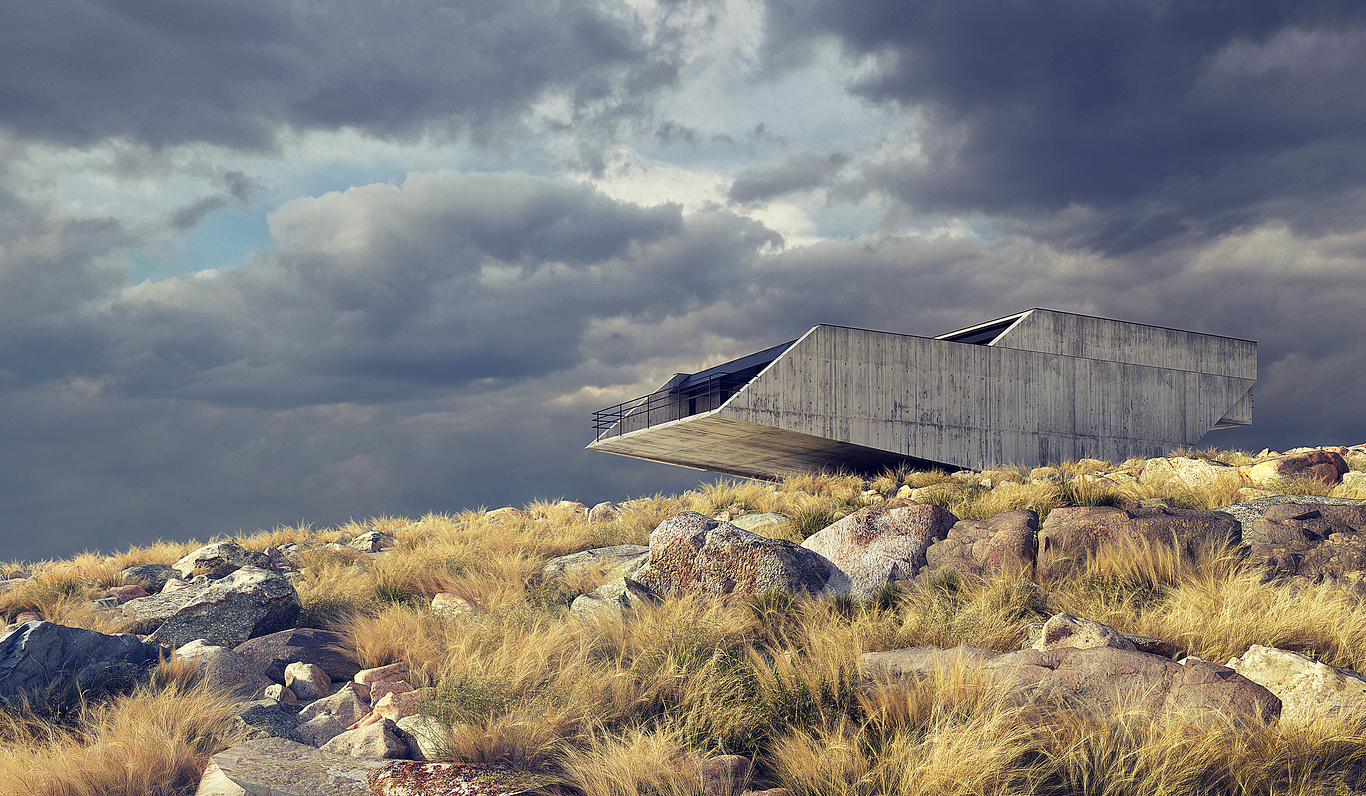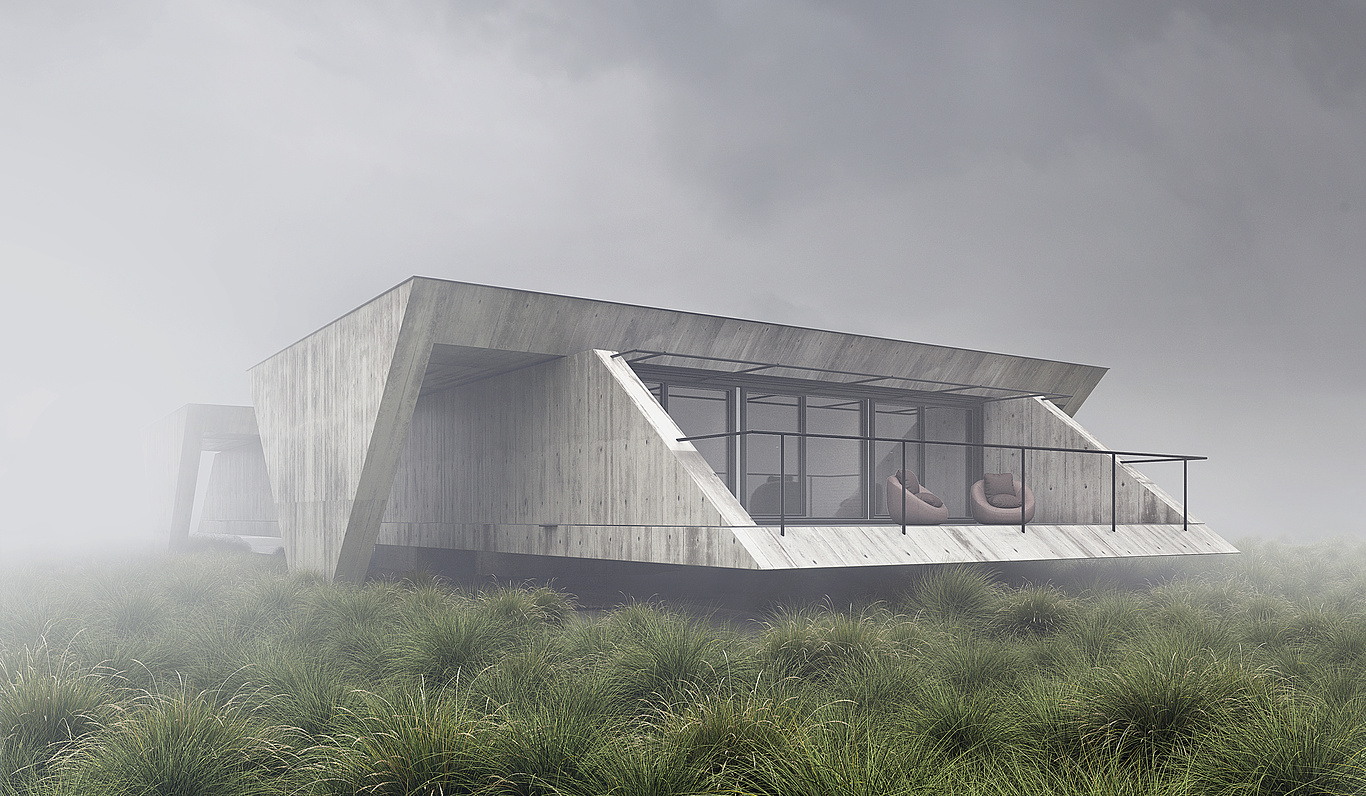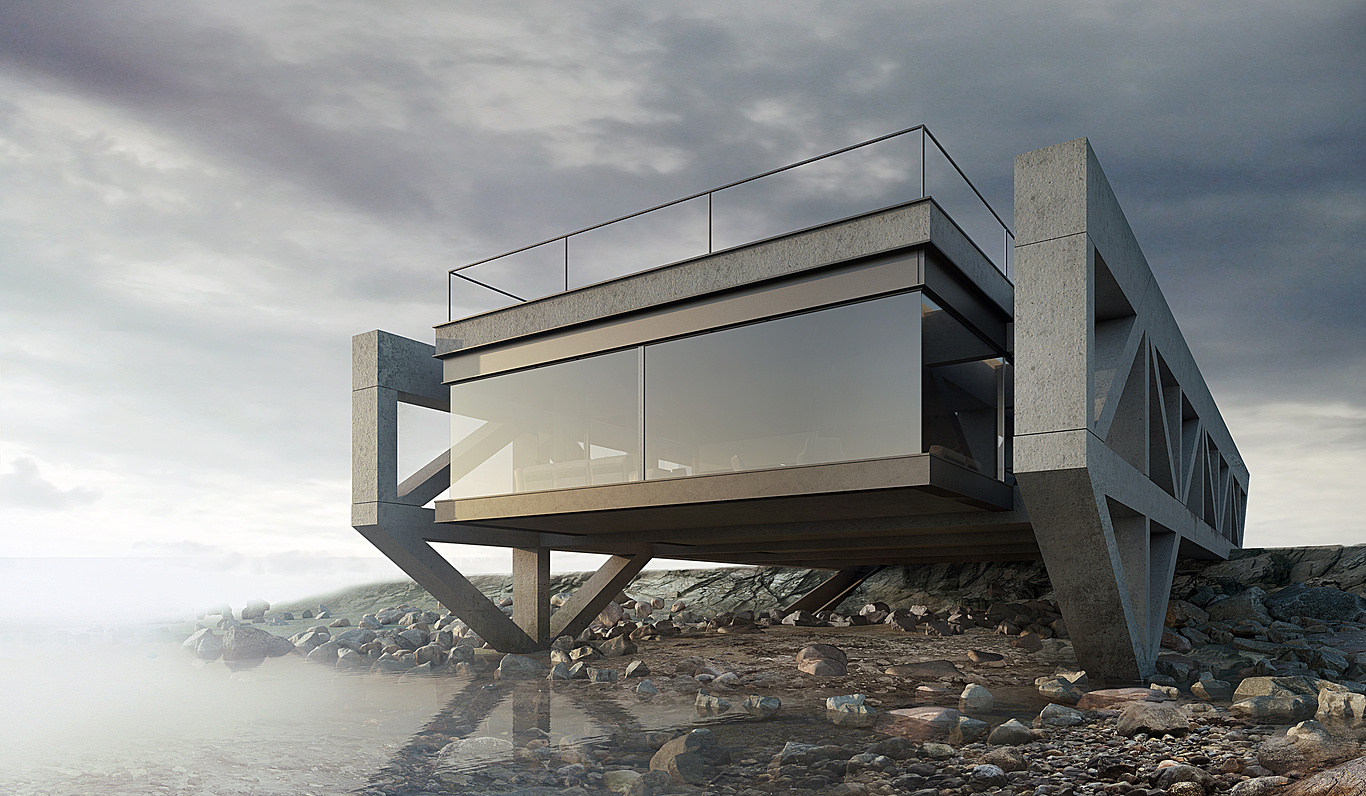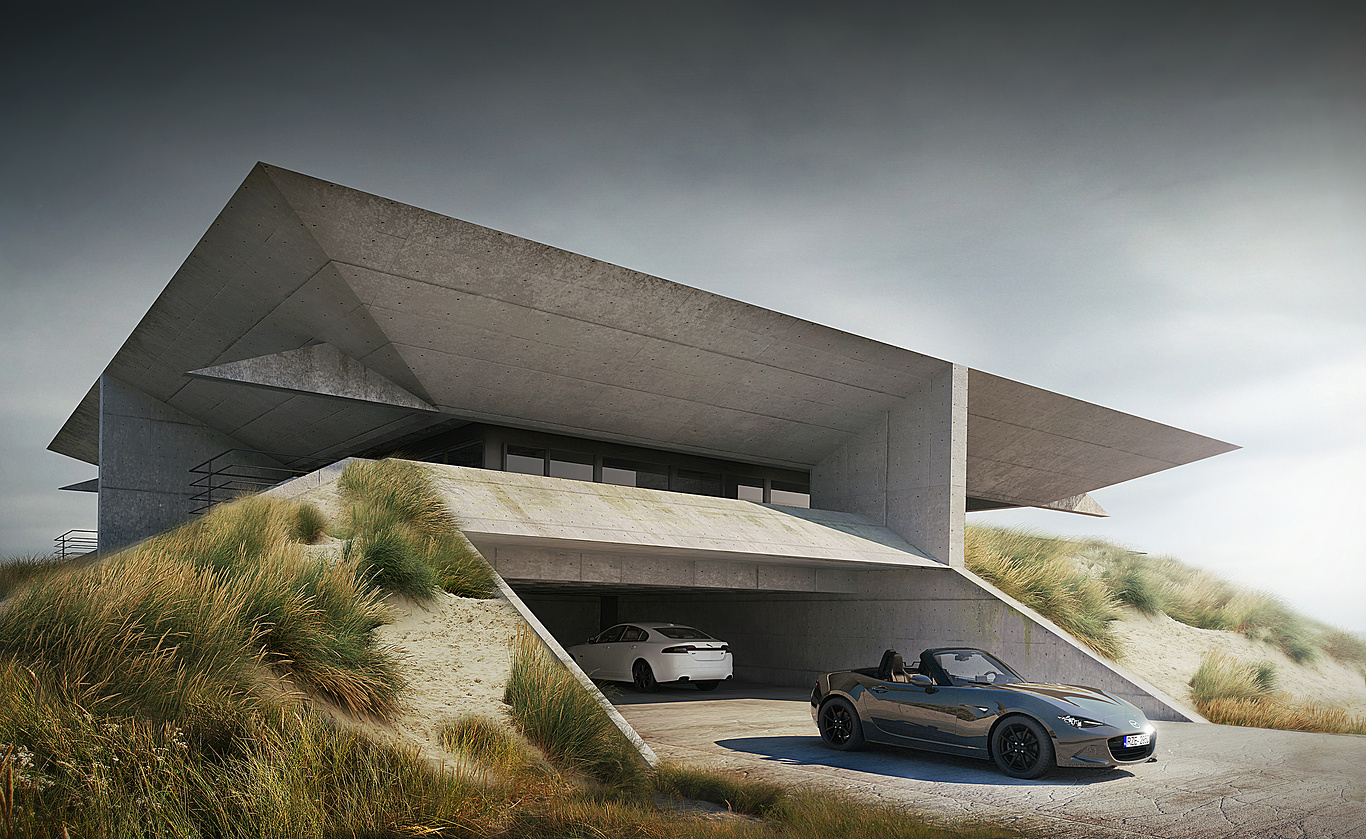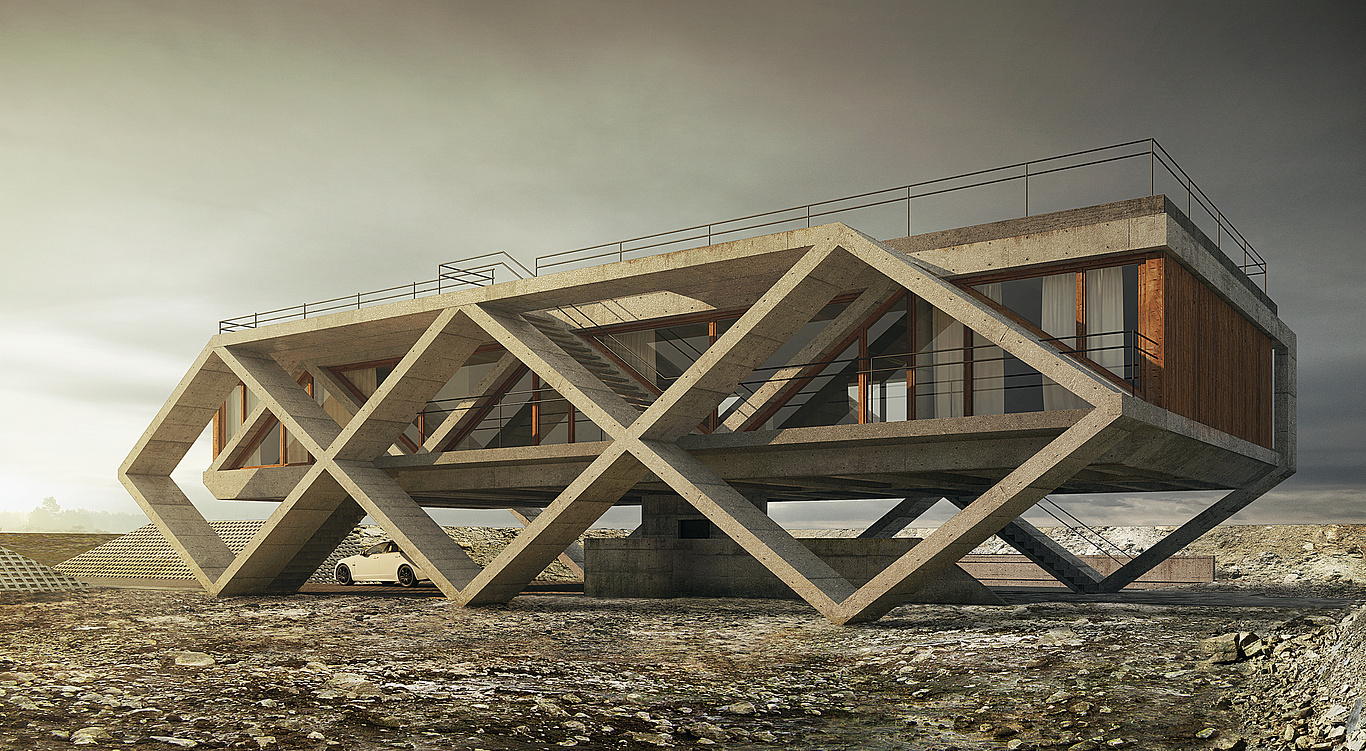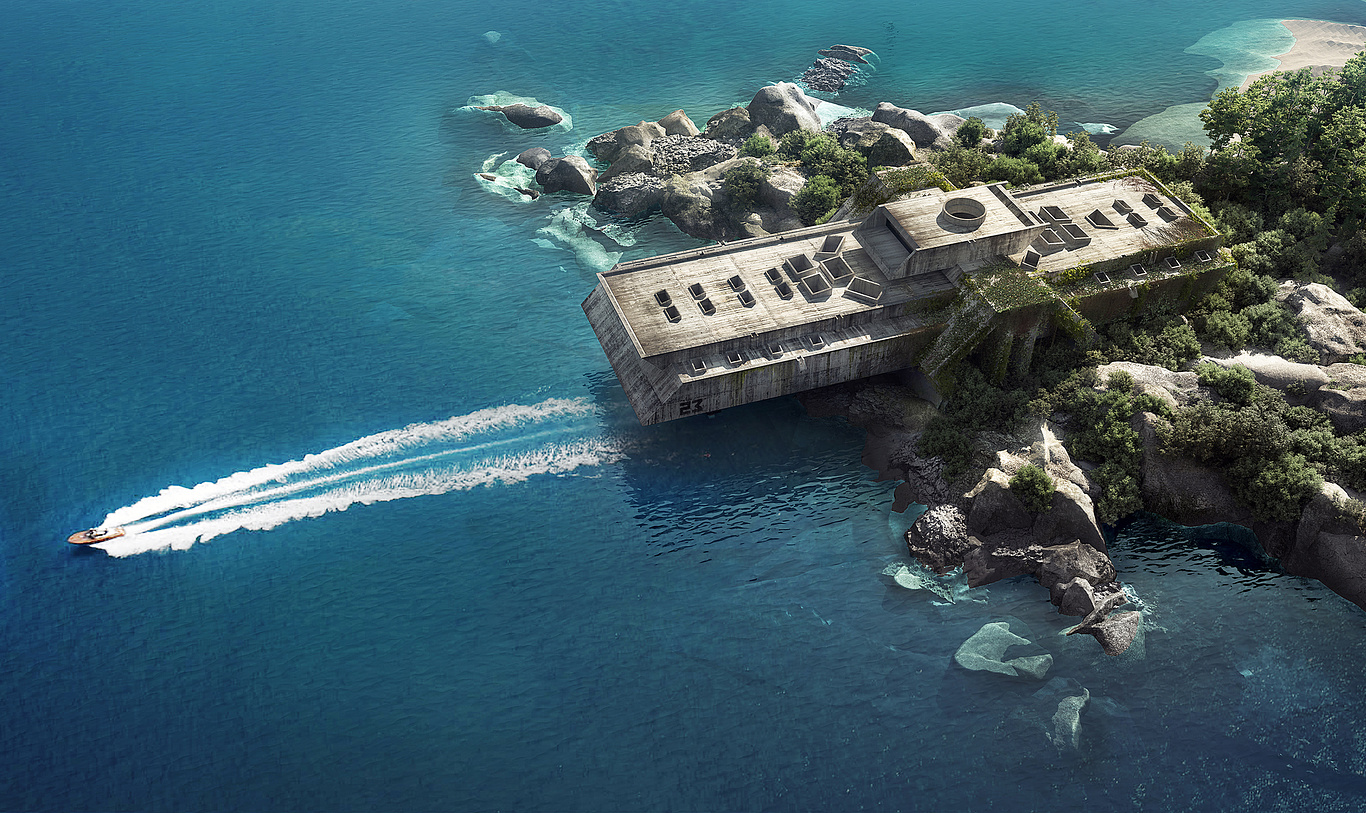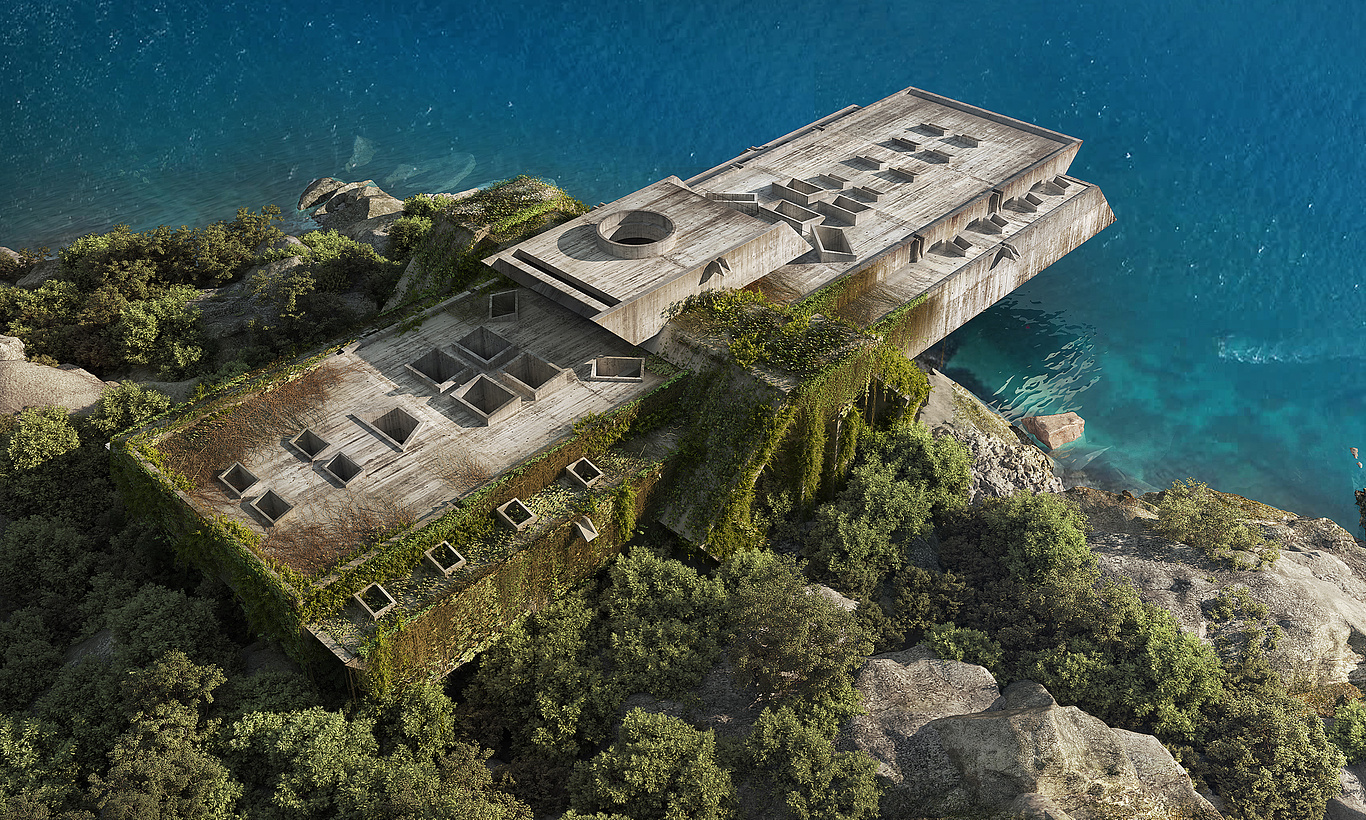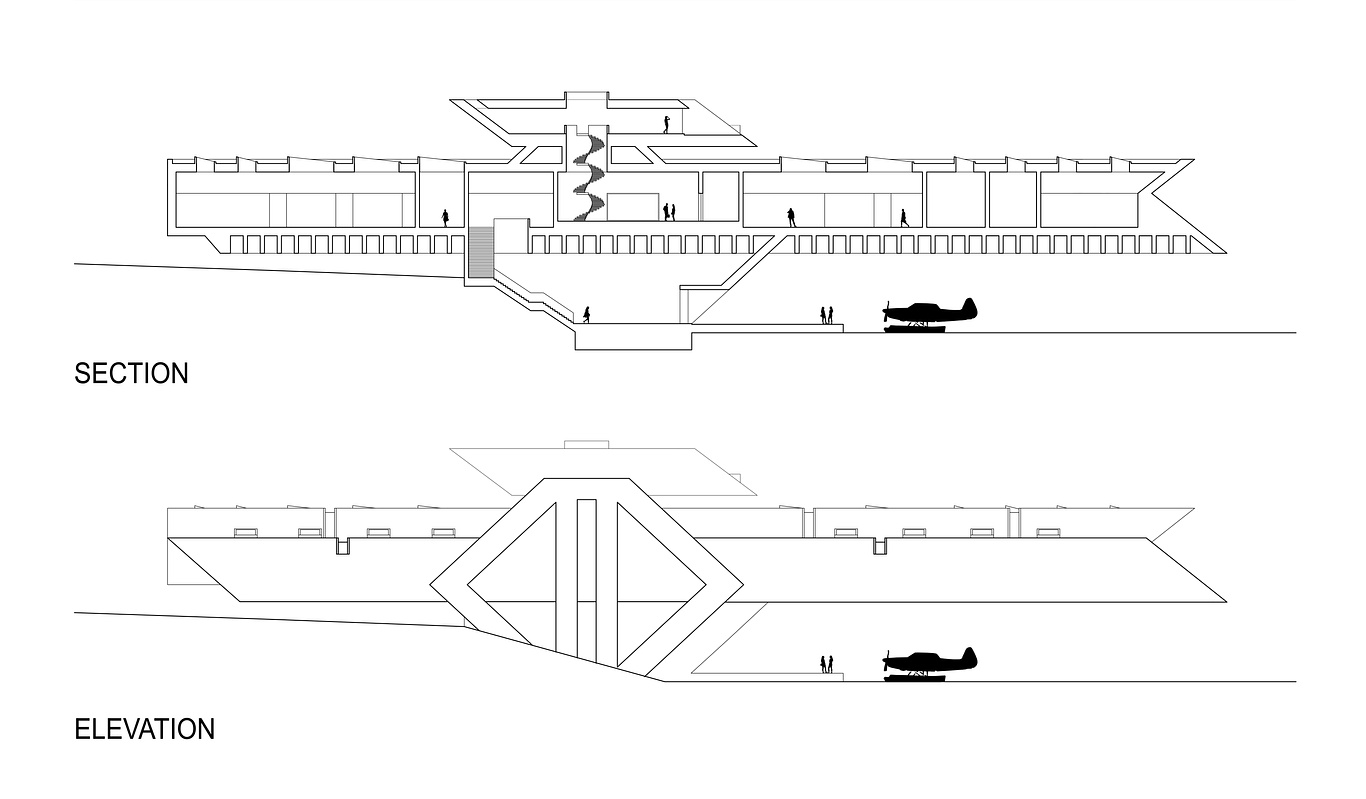
Interviews
Bringing the beauty of brutalism to the big screen
Find out how architect and artist Adam Spychała created the brutalist backdrop for the new Netflix movie Spiderhead.
Over 400 one-of-kind designs
For architectural designer and 3D artist Adam Spychała, it all started with a fascination for the brutalist architecture of the mid-20th century. He was drawn to its bold geometric forms and unadorned style, as well as its exposed concrete and honest materials. (Brutalist comes from the French term “Béton brut,” meaning raw concrete.) Inspired by notable architects like Corbusier, Paulo Mendes da Rocha, Villanova Artigas, and Oscar Niemeyer, Adam designed his own buildings in the same spirit, but with a modern twist. The results are stunning 3D renderings of homes that look like they're carved out of concrete, with crisp angles, clean lines, and pure forms and materials that have become his signature style.
For architectural designer and 3D artist Adam Spychała, it all started with a fascination for the brutalist architecture of the mid-20th century. He was drawn to its bold geometric forms and unadorned style, as well as its exposed concrete and honest materials. (Brutalist comes from the French term “Béton brut,” meaning raw concrete.) Inspired by notable architects like Corbusier, Paulo Mendes da Rocha, Villanova Artigas, and Oscar Niemeyer, Adam designed his own buildings in the same spirit, but with a modern twist. The results are stunning 3D renderings of homes that look like they're carved out of concrete, with crisp angles, clean lines, and pure forms and materials that have become his signature style.
Since 2011, Adam has created over 400 unique designs that draw inspiration from the places he's visited and the people he imagines might live there. Most of his projects are just for fun, something he enjoys doing on weekends and in his spare time. Though he wishes he had more time to work on each design, as soon as a project is finished, he's already started thinking about the next one. In the case of Spiderhead, his next project would be a commission to design the architecture that’s at the center of the story.
How did you get involved in the Spiderhead project?
I started working on the project in 2019. At the time, the movie was titled Escape from Spiderhead, which Netflix recently shortened to Spiderhead for its streaming release. Director Joseph Kosinski, who also directed Tron: Legacy, Oblivion, and Top Gun: Maverick, is well known for his world building and design aesthetic. After seeing my brutalist-inspired designs circulating online, the show's production designer, Jeremy Hindle, approached me about designing the architecture for the film. I agreed and that’s how our collaboration started.
I started working on the project in 2019. At the time, the movie was titled Escape from Spiderhead, which Netflix recently shortened to Spiderhead for its streaming release. Director Joseph Kosinski, who also directed Tron: Legacy, Oblivion, and Top Gun: Maverick, is well known for his world building and design aesthetic. After seeing my brutalist-inspired designs circulating online, the show's production designer, Jeremy Hindle, approached me about designing the architecture for the film. I agreed and that’s how our collaboration started.
What was it like working on the project?
Working on Spiderhead was a new experience for me. It was my first time designing for film, but it wasn't that different from my traditional design process. Right from the start, the team was open to strong, decisive architectural forms. Everything was very efficient, from the first conversation with the director and production designer to the final delivery. It was a pleasure working on such an inspiring project.
Working on Spiderhead was a new experience for me. It was my first time designing for film, but it wasn't that different from my traditional design process. Right from the start, the team was open to strong, decisive architectural forms. Everything was very efficient, from the first conversation with the director and production designer to the final delivery. It was a pleasure working on such an inspiring project.
What was your favorite part of the project?
I enjoyed sketching and developing concepts for the building, so that its form and function would match the vision for the movie. I also enjoyed visualizing the project as it would appear on the Australian coast in its final form.
I enjoyed sketching and developing concepts for the building, so that its form and function would match the vision for the movie. I also enjoyed visualizing the project as it would appear on the Australian coast in its final form.
Can you walk us through your process?
I got started by reading the script outline and the short story that inspired the film, Escape from Spiderhead by George Saunders. It's set in a dystopian future, where a (mad) scientist offers prisoners shorter sentences to take part in experiments with mind-altering drugs. The story takes place in a remote prison-laboratory located on a rocky coast that can only be reached by boat or seaplane.
As soon as I was familiar with the story, I started to lay out the building program. The facility included 16 private cells for the convicts, plus a shared dining area and common room. There was also an observation room where the drugs were administered, and an adjacent control room where the scientists watched the experiments through a one-way mirror. None of the rooms had windows, except for the scientist's quarters. Everywhere else, skylights were the only source of daylight. After carefully considering these program requirements, I proposed a few layout ideas, and we selected the best one.
I got started by reading the script outline and the short story that inspired the film, Escape from Spiderhead by George Saunders. It's set in a dystopian future, where a (mad) scientist offers prisoners shorter sentences to take part in experiments with mind-altering drugs. The story takes place in a remote prison-laboratory located on a rocky coast that can only be reached by boat or seaplane.
As soon as I was familiar with the story, I started to lay out the building program. The facility included 16 private cells for the convicts, plus a shared dining area and common room. There was also an observation room where the drugs were administered, and an adjacent control room where the scientists watched the experiments through a one-way mirror. None of the rooms had windows, except for the scientist's quarters. Everywhere else, skylights were the only source of daylight. After carefully considering these program requirements, I proposed a few layout ideas, and we selected the best one.
For me, pencil and paper are the best way to start designing. It’s the fastest way to sketch options and try out different solutions. Then, I use AutoCAD for 2D layout and SketchUp for 3D modeling. Besides SketchUp, I also use Cinema 4D and Corona Renderer. For Spiderhead, I used 3ds Max with V-Ray—with post-processing in Photoshop. As a final result, I delivered several photorealistic views of the design composited into location photos.
Are there any specific tools you can’t live without?
I can't live without a pencil and a sheet of paper. I also really like SketchUp for quickly converting those sketches into 3D.
I can't live without a pencil and a sheet of paper. I also really like SketchUp for quickly converting those sketches into 3D.
Are there any tools you wished you had, even if they don't exist yet?
Probably a time machine, because time is always short!
Probably a time machine, because time is always short!
What are you looking forward to working on?
I'm still working on my house series, and I hope to have another chance to work on a project as interesting as Spiderhead soon.
From the start, it was clear that Adam’s unique style and approach to design would be perfect for Spiderhead. With a background in both brutalist architecture and 3D visualization, he brought a new level of creativity and detail to the project. The result is an iconic and unforgettable backdrop for the movie, which you can watch now on Netflix.
I'm still working on my house series, and I hope to have another chance to work on a project as interesting as Spiderhead soon.
From the start, it was clear that Adam’s unique style and approach to design would be perfect for Spiderhead. With a background in both brutalist architecture and 3D visualization, he brought a new level of creativity and detail to the project. The result is an iconic and unforgettable backdrop for the movie, which you can watch now on Netflix.
If you’d like to see more of Adam’s work, be sure to check out his entire House Series. We can only wait to see what his next project will be!
You must be logged in to post a comment. Login here.
About this article
Find out how architect and artist Adam Spychała created the brutalist backdrop for the new Netflix movie Spiderhead.
visibility3.48 k
favorite_border3
mode_comment0


